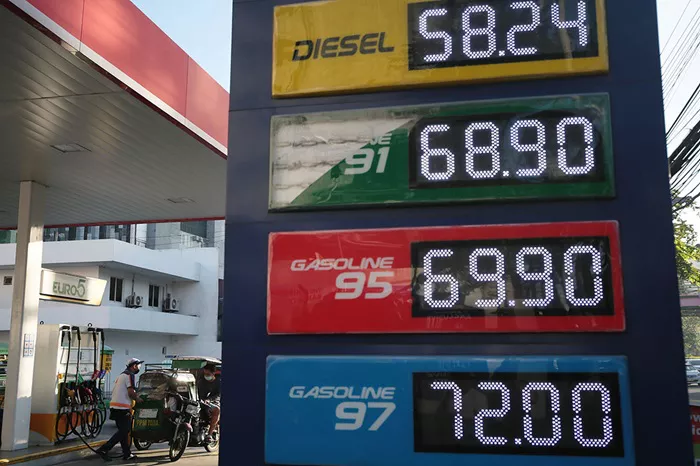Gasoline prices are a constant topic of concern and discussion among consumers, policymakers, and businesses alike. The fluctuations at the pump often prompt questions about what drives these changes and why they occur. While the price of gasoline can vary significantly between regions and over time, several fundamental factors consistently influence these fluctuations. By understanding these factors, stakeholders can better comprehend the dynamics of gasoline pricing and its broader economic implications.
1. Crude Oil Prices: The Bedrock of Gasoline Costs
The price of crude oil is undeniably the most significant determinant of gasoline prices. As crude oil is refined into gasoline and other petroleum products, its cost constitutes a substantial portion of the final retail price. Factors affecting crude oil prices include global supply and demand dynamics, geopolitical tensions, production quotas set by oil-producing nations, and market speculation. Fluctuations in crude oil prices can swiftly translate into changes at the pump, affecting consumer budgets and economic forecasts alike.
2. Refining and Distribution Costs: Turning Oil into Gasoline
Once crude oil is extracted from the ground, it undergoes a complex refining process to transform it into usable gasoline. Refineries incur costs related to refining capacity, maintenance, labor, and compliance with environmental regulations. Furthermore, the distribution network that transports gasoline from refineries to retail outlets adds logistical expenses and operational challenges. These costs vary regionally and can influence local gasoline prices independently of crude oil fluctuations.
3. Taxes and Regulatory Policies: Government Impact on Pump Prices
Taxes imposed by federal, state, and local governments represent a substantial component of gasoline prices. These taxes fund infrastructure projects, environmental initiatives, and other governmental functions. The level of taxation can vary widely between jurisdictions, leading to significant price discrepancies across regions. Regulatory policies, such as environmental standards and fuel blending requirements, also affect gasoline prices by influencing refining processes and production costs.
4. Seasonal Demand Variations: Summer Driving and Winter Heating
Gasoline demand exhibits seasonal patterns influenced by weather conditions and consumer behavior. During the summer months, increased travel and vacation activities elevate gasoline consumption, driving prices upward. Conversely, in winter, heating oil demand competes for refinery capacity, potentially impacting gasoline production and prices. These seasonal fluctuations in demand create predictable cycles in gasoline pricing that businesses and consumers can anticipate and prepare for accordingly.
5. Currency Exchange Rates: Global Markets and Local Prices
As gasoline is traded as a global commodity, currency exchange rates play a crucial role in determining local pump prices. Fluctuations in exchange rates can influence the cost of imported crude oil and refined gasoline, directly impacting pricing at the pump. For countries whose currencies weaken against the U.S. dollar, importing oil becomes more expensive, leading to higher gasoline prices domestically. Conversely, a stronger local currency can mitigate price increases or even result in price decreases despite stable or rising global oil prices.
See also: The Best Day Of The Week To Buy Gas
6. Economic Conditions: GDP Growth and Consumer Behavior
Broader economic factors, such as GDP growth, employment levels, and consumer confidence, influence gasoline demand and pricing. During periods of economic expansion, increased industrial activity and higher consumer spending typically elevate gasoline consumption, placing upward pressure on prices. Conversely, economic downturns can lead to reduced demand and lower prices at the pump as consumers and businesses cut back on discretionary travel and expenses. These economic cycles underscore the interplay between macroeconomic conditions and energy markets.
7. Competition and Market Structure: Retail Dynamics
The competitive landscape among gasoline retailers and distributors also affects pricing strategies and consumer costs. In regions with numerous competing gas stations, price competition may drive down retail prices to attract customers. In contrast, areas with fewer suppliers or significant market concentration may experience higher prices due to reduced competitive pressures. Market structures, including vertical integration among oil companies and franchise agreements with retailers, further influence pricing dynamics and consumer options.
8. Global Events and Geopolitical Risks: Uncertainty in Energy Markets
Geopolitical events, such as conflicts in oil-producing regions, international sanctions, and political instability, can introduce volatility into energy markets and gasoline prices. Disruptions to oil supply chains or heightened geopolitical tensions often trigger speculative trading and price spikes in crude oil futures, which are swiftly reflected in retail gasoline prices. These global events highlight the interconnectedness of energy markets and the susceptibility of gasoline prices to geopolitical developments beyond domestic control.
Conclusion
Gasoline prices represent a multifaceted intersection of global economics, geopolitical dynamics, regulatory frameworks, and consumer behavior. While the factors influencing gasoline prices are diverse and interconnected, understanding these dynamics empowers stakeholders to make informed decisions and navigate the economic implications of fluctuating energy costs. Whether analyzing the impact of crude oil price movements, regulatory policies, or seasonal demand variations, stakeholders must consider the intricate web of influences shaping gasoline pricing to anticipate future trends and mitigate financial risks effectively. By fostering transparency and awareness around these factors, stakeholders can contribute to a more informed dialogue on energy policy, economic stability, and sustainable development in the global energy landscape.
Related topics:
Top 7 Environmental Impacts Of Gasoline

